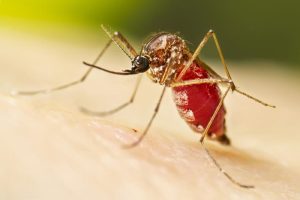NewsDesk @bactiman63
The flooding as a result of monsoon rains since mid-June in Pakistan has resulted in another public health issue–increases in dengue fever,

In Sindh province in southern Pakistan, officials have reported a total 9,826 dengue fever cases in 2022, including about three-quarters of the cases reported in September alone.
Of this total, 6,053 confirmed cases were reported in Karachi. Karachi also accounts for the vast majority of dengue deaths in Sindh (36 out of 39).
Pakistan news source, Dawn, reports health experts said there was persistent pressure on city’s hospitals as there was no let-up in the number of dengue fever cases.
Subscribe to Outbreak News TV on YouTube
“We have seen a gradual increase in the number of dengue cases being detected at the university’s central laboratory over the past four months. This trend is likely to go up and attain a peak by mid-October,” shared Dr Saeed Khan, a professor of molecular pathology heading the Sindh Public Health Lab at the Dow University of Health Sciences (DUHS).
Pakistan has reported increases in dengue in recent years. According to the National Institute of Health (NIH), Islamabad, the cases reported in Pakistan in 2017, 2018, 2019, and 2020 were 22938, more than 3200, 24547, and 3442 respectively. By November 2021, 48906 cases had been reported for that year. In the period between November 19, 2021, and December 10, 2021, 16388 cases were reported. In a similar period in 2020, only 1153 cases were reported. Almost every year or every alternate year, Pakistan faces a dengue epidemic with increasing severity and mortality despite all the efforts of the government. Without such efforts, the epidemic would be much worse.
According to the UN Office for the Coordination of Humanitarian Affairs (UN OCHA), the monsoon floods in Pakistan have resulted in more than 2 million damaged and destroyed houses.
Some 7.9 million people are reportedly displaced as a result of the heavy rains and floods, including some 598,000 people living in relief camps.
About 13,000 people were injured, while 1600 people died.
- CDC warns of Listeria outbreak linked to many brands of brie and camembert cheese
- France: Indigenous cases of dengue fever rise to 57
- Florida Vibrio vulnificus update: The first 9 months of 2022
- Malaysia: Dengue cases more than double in 2022
- Uganda Ebola update: 35 confirmed cases, 7 deaths
- Puerto Rico officials now report 72 suspected leptospirosis cases
- Malaria spike linked to amphibian die-off in Central America


One thought on “Pakistan: Dengue cases near 10K in Sindh province, Most recorded in September”